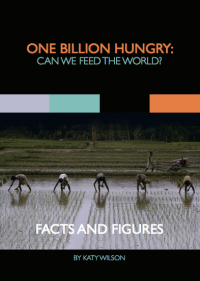In several blogs we’ve discussed topics around minimising trade-offs and balancing competing land uses at a landscape scale, particularly in terms of agriculture and environmental goods and services. Many theories and methods of analysis have been suggested that aim to reconcile competing interests and objectives in a landscape and, while fascinating and valuable, these endeavours rarely seem to feature the views of the people that live in such landscapes nor is it always clear how findings relate to current social and political settings. As part of my PhD research on the potential impacts of land sparing and land sharing on forest habitat, ecosystem services, incomes and food security in a rapidly changing landscape, I recently spent several months in western Uganda, around the Budongo Forest Reserve meeting farmers, local government, NGOs and big businesses to better understand the impacts and drivers of land use change in the area. The landscape around the Budongo Forest Reserve is a good example of what can happen when the objectives of the few (and most powerful) are prioritised over those of the majority. In a series of blogs I’ll be exploring the way the landscape has changed, how it may change again and options for reducing poverty and food insecurity with the hope of, through discussion, finding broader lessons applicable to landscapes elsewhere. To this end, readers, your thoughts, comments and questions are both welcome and essential.
To start off the series let me introduce you to the landscape in question.
The Budongo Forest Reserve landscape
The Budongo Forest Reserve in western Uganda is one of the largest tropical forests in the country, containing the highest number of chimpanzees in Uganda. Budongo Forest is located within the Albertine Rift, part of the East African Rift, which spans five countries, and contains more vertebrate species and threatened and endemic species than anywhere else in Africa.
South east of Budongo Forest Reserve, the landscape is characterized by gently rolling hills and a mosaic of rainforest, woodland, grassland, small-scale farms and large-scale sugarcane farming, a mosaic that has seen marked changes particularly in the last two decades. The main land use and source of income in the region is agriculture with many households relying on subsistence farming and forest products for their livelihoods. The most important crops are cassava, maize, bananas, sugarcane and beans.
A rapidly changing landscape
The expansion of cash crops, rapid population growth and migration from within and outside of the country driven by civil war and conflict, as well as poor forest governance have led to vast deforestation, natural resource shortages in such things as firewood and timber, and disputes between residents over, what is fast becoming infertile and exhausted, land. The soils are being depleted rapidly due to slash and burn agriculture, poor access to fertilizer and over cultivation. Many of these drivers continue unchecked and, without intervention, unprotected forest in the landscape is expected to all but disappear in the next 15 years while yields may continue their largely downwards trend. Given the importance of forests for maintaining productive agricultural land, reliable weather patterns and as a source of food, medicine and energy such deforestation is likely to have significant detrimental and perhaps irreversible consequences for the livelihoods of people in the landscape.
Deforestation is thought by both residents and government alike, to have exacerbated poverty, landlessness, changed weather patterns, reduced soil fertility and led to the out migration of once common species. Forests are disappearing quickly in the Budongo Forest Reserve landscape, a trend that is thought to have begun in the 1980s with the growth of sugarcane farming, influxes of migrants and the introduction of pit-sawing, charcoal production and more extensive mechanized farming systems. As of 20 10, in the area between Budongo and Bugoma Forest Reserve to the south, approximately 90,000 ha of high forest and 120,000 ha of woodland remain in the landscape outside protected areas, predominantly in small patches of up to several 100ha. Mwavu & Witkowski (2008) investigated land use change in and around Budongo Forest Reserve between 1988 and 2002. Area under sugarcane expanded 17-fold from 690 hectares (ha) in 1988 to 12,729ha in 2002. The loss of 4,680ha of forest (a reduction of 8.2%) occurred on the southern border of the reserve to allow for sugarcane expansion. [Read more…]
10, in the area between Budongo and Bugoma Forest Reserve to the south, approximately 90,000 ha of high forest and 120,000 ha of woodland remain in the landscape outside protected areas, predominantly in small patches of up to several 100ha. Mwavu & Witkowski (2008) investigated land use change in and around Budongo Forest Reserve between 1988 and 2002. Area under sugarcane expanded 17-fold from 690 hectares (ha) in 1988 to 12,729ha in 2002. The loss of 4,680ha of forest (a reduction of 8.2%) occurred on the southern border of the reserve to allow for sugarcane expansion. [Read more…]










